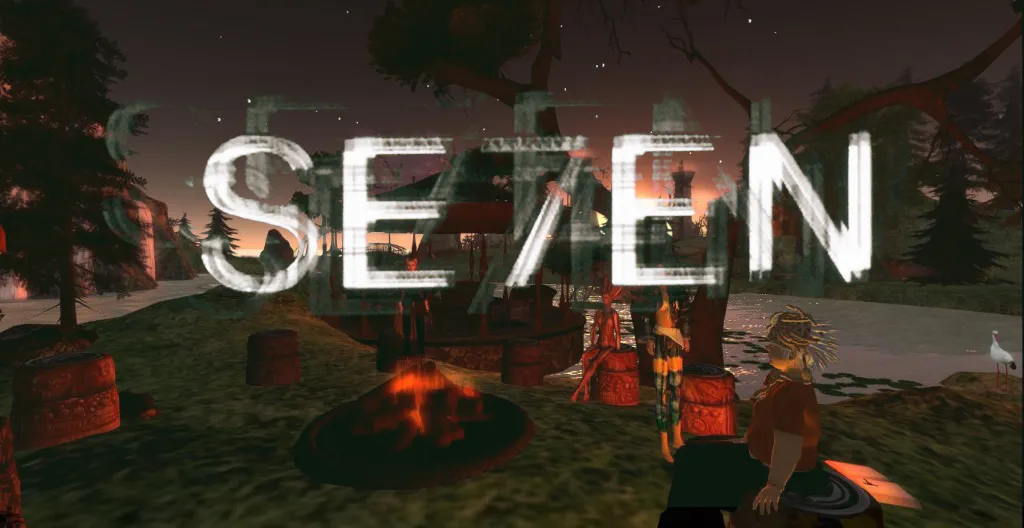INTRODUCTION
We can define a metaverse in a number of different ways. At a minimum, a metaverse must allow users to experience and perform actions with others in shared virtual spaces.
Years ago, we should have recognized and learned from the painful problems associated with a social metaverse platform which focused on user generated content. Today, a new crop of companies are gearing up to repeat those same mistakes.
As we look back, it was never really the user generated content that was the problem. Rather, it was the metaverse platform itself. It couldn’t live up to the hype. The platform was not capable of capturing a large audience, much less living up its roots in science fiction.

The concept of a metaverse (or even “The Metaverse”) is something that might yet deliver a compelling experience, but not in its current form. The design in use today needs to be shelved and replaced with something better.
I’m reminded of a quote from Chet Faliszek of Valve Software when he addressed Slush Play 2015 and spoke on the topic of VR development.
“We’ve also seen a bunch of people following what others are doing. But don’t accept that. [….] There could be a fatal flaw in following what someone else is doing. They could be building on fundamental problems that they’re just not choosing to solve.”
THE PROBLEM
These metaverse platforms have not just one, but seven major problems. Some of the problems are in building the platform, while others are in operating the platform. Let’s take a look.
1. A metaverse must keep pace with technology if it intends to remain relevant. Users and developers depend on the platform itself for their technological innovation. Additionally, the more complex and integrated a platform gets, the slower its innovation becomes.
How long did it take Second Life to support the Oculus Rift, which is arguably the most relevant piece of hardware ever to be developed in its existence? Where is Second Life when others are experimenting with hand and body tracking in virtual worlds? Why hasn’t it visually kept pace with the innovations in 3D game engines?
Games and other applications will continue to push the edge of new technology and innovation. Perhaps it is unfair, but they will be the measure by which users and developers will measure the technological innovation of a metaverse.
2. A rapidly evolving software and hardware ecosystem is extremely unfavorable to the development and operation of a metaverse.
Today’s rate of innovation creates an even more unfavorable environment for a metaverse platform. Technology is moving too rapidly (innovations in head mounted displays, inputs, drivers, performance, formats, standards, and more). It is difficult to build (or grow) a stable software platform on top of shifting sand.
3. Users (and therefore, developers) want a general-purpose machine of unlimited scope. It is a challenge that a metaverse platform engine cannot meet.
If users can do it in the real world, they want to do it in a metaverse. If they can’t do it in the real world but they can imagine it, then they want to do it in a metaverse. Millions of people will expect a metaverse to meet their own desires (even if their desires are in direct conflict with that of others). The desired feature set is not only incredibly large, it is also contradictory at times.
4. The real challenge isn’t technical. If it was, someone would have solved it by now, or we would have fixed someone else’s broken implementation.
Creating a metaverse is a large and complex problem with many interdependent variables, many of which are not technical. It is a systems engineering problem comprised of multiple domains. The real problem is in the human side of the equation.
5. Competition divides the experience. Content will be stranded and users will be fragmented, both of which diminish the overall experience.
Competition between metaverses already exists and is growing. While the increased competition creates innovation and choice for users and in-world developers, it also adds to the risk of commercial in-world developers, metaverse operators, and investors.
6. It is very risky to create a metaverse.
The barrier to entry is high, expectations are high, design is difficult, development period is long, ecosystem is evolving, competition already exists, and costs are high. Small teams are at a disadvantage. Big teams are financially pressured to deliver unrealistic results.
7. A metaverse continues to be a solution that is looking for a problem to solve.
In today’s environment, most people believe the problem is “social.” A more cynical view (and perhaps a more honest one) is that the problem is to “build something that will make money.” A clearly defined set of problems, not to mention an explanation of how a metaverse actually addresses those problems, is lacking.
A SYMPTOM OF MORE FUNDAMENTAL ISSUES
We have seven serious problems, none of which have found tractable solutions. Chet Faliszek’s admonishment is clearly just as relevant to metaverse developers as it is to VR developers. We’re building on fundamental problems that we either don’t recognize, or we’re choosing not to solve.
Is the concept of a metaverse simply unworkable? No, I think the concept has exceptional merit. What this tells us is that, behind these seven specific problems, we have some unrecognized flaws in our current understanding of what a real-world metaverse is and how it works.
Before we can begin to rework the metaverse problem, we need to identify and understand the core issues behind our current problems. Once identified, we can determine how a new metaverse concept might trade in our unworkable problems for more tractable ones.
SUMMARY
We reviewed existing metaverse platforms and found seven major problems in their implementation. These seven problems point to more fundamental issues which need to be identified so that we can improve our understanding of how to implement a metaverse.
The good news is that the metaverse concept can be reworked into a new model with tractable problems and practical benefits. We’ll explore this and more in future articles on this topic.
























